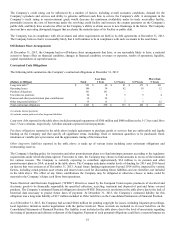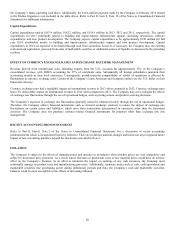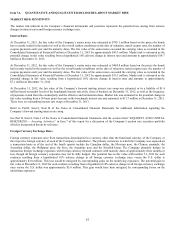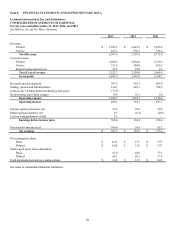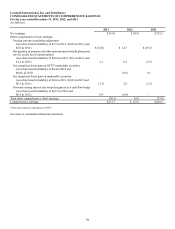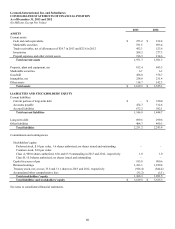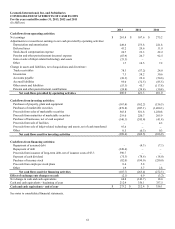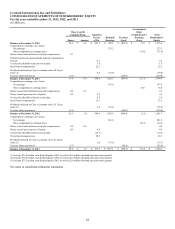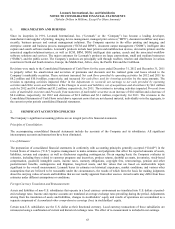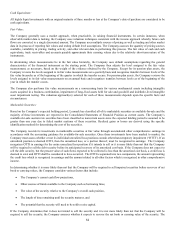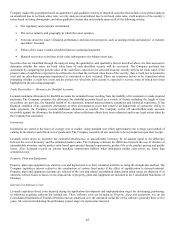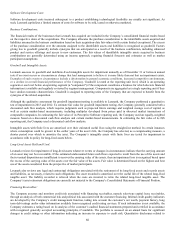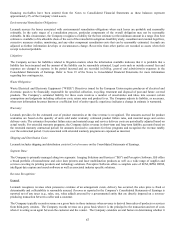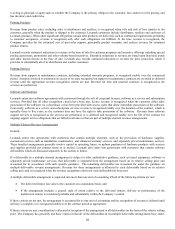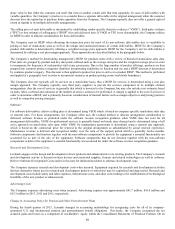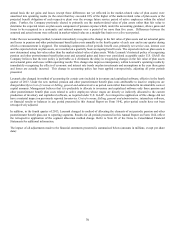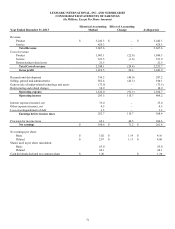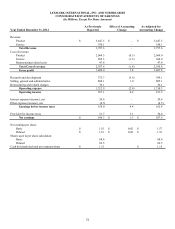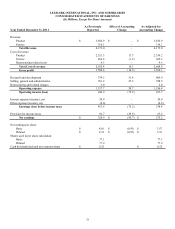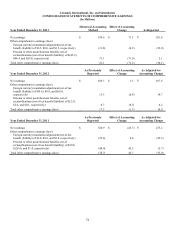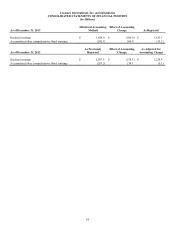Lexmark 2013 Annual Report Download - page 69
Download and view the complete annual report
Please find page 69 of the 2013 Lexmark annual report below. You can navigate through the pages in the report by either clicking on the pages listed below, or by using the keyword search tool below to find specific information within the annual report.
65
Company makes this assessment based on quantitative and qualitative factors of impaired securities that include a time period analysis
on unrealized loss to net book value ratio; severity analysis on unrealized loss to net book value ratio; credit analysis of the security’s
issuer based on rating downgrades; and other qualitative factors that may include some or all of the following criteria:
The regulatory and economic environment.
The sector, industry and geography in which the issuer operates.
Forecasts about the issuer’s financial performance and near-term prospects, such as earnings trends and analysts’ or industry
specialists’ forecasts.
Failure of the issuer to make scheduled interest or principal payments.
Material recoveries or declines in fair value subsequent to the balance sheet date.
Securities that are identified through the analysis using the quantitative and qualitative factors described above are then assessed to
determine whether the entire net book value basis of each identified security will be recovered. The Company performs this
assessment by comparing the present value of the cash flows expected to be collected from the security with its net book value. If the
present value of cash flows expected to be collected is less than the net book value basis of the security, then a credit loss is deemed to
exist and an other-than-temporary impairment is considered to have occurred. There are numerous factors to be considered when
estimating whether a credit loss exists and the period over which the debt security is expected to recover, some of which have been
highlighted in the preceding paragraph.
Trade Receivables -- Allowance for Doubtful Accounts:
Lexmark maintains allowances for doubtful accounts for estimated losses resulting from the inability of its customers to make required
payments. The Company estimates the allowance for doubtful accounts based on a variety of factors including the length of time
receivables are past due, the financial health of its customers, unusual macroeconomic conditions and historical experience. If the
financial condition of its customers deteriorates or other circumstances occur that result in an impairment of customers’ ability to
make payments, the Company records additional allowances as needed. The Company writes off uncollectible trade accounts
receivable against the allowance for doubtful accounts when collections efforts have been exhausted and/or any legal action taken by
the Company has concluded.
Inventories:
Inventories are stated at the lower of average cost or market, using standard cost which approximates the average cost method of
valuing its inventories and related cost of goods sold. The Company considers all raw materials to be in production upon their receipt.
Lexmark writes down its inventory for estimated obsolescence or unmarketable inventory by an amount equal to the difference
between the cost of inventory and the estimated market value. The Company estimates the difference between the cost of obsolete or
unmarketable inventory and its market value based upon product demand requirements, product life cycle, product pricing and quality
issues. Also, Lexmark records an adverse purchase commitment liability when anticipated market sales prices are lower than
committed costs.
Property, Plant and Equipment:
Property, plant and equipment are stated at cost and depreciated over their estimated useful lives using the straight-line method. The
Company capitalizes interest related to the construction of certain fixed assets if the effect of capitalization is deemed material.
Property, plant and equipment accounts are relieved of the cost and related accumulated depreciation when assets are disposed of or
otherwise retired. Gains or losses on the dispositions of property, plant and equipment are included in the Consolidated Statements of
Earnings.
Internal-Use Software Costs:
Lexmark capitalizes direct costs incurred during the application development and implementation stages for developing, purchasing,
or otherwise acquiring software for internal use. These software costs are included in Property, plant and equipment, net, on the
Consolidated Statements of Financial Position and are amortized over the estimated useful life of the software, generally three to five
years. All costs incurred during the preliminary project stage are expensed as incurred.
65


